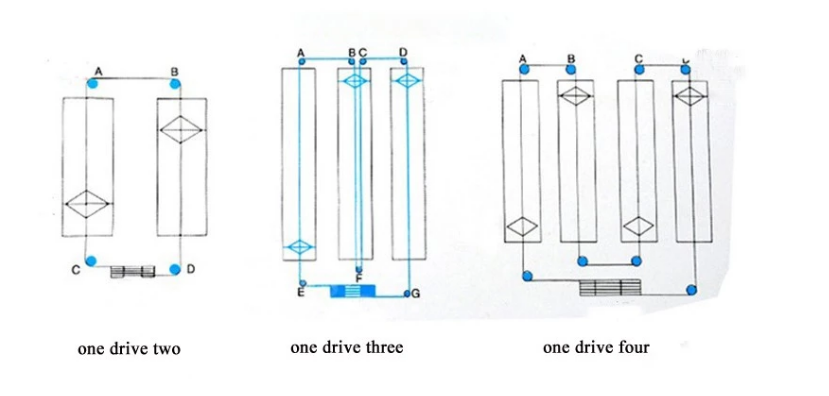vertical feed mixers
Dec . 27, 2024 07:58 Back to list
vertical feed mixers
Understanding Vertical Feed Mixers A Key Component for Modern Livestock Operations
In the realm of modern livestock farming, the efficiency and efficacy of feed preparation play a crucial role in overall productivity. Among the various tools available to farmers, vertical feed mixers have emerged as a pivotal asset. These machines are designed to blend different types of feed ingredients thoroughly, ensuring that each livestock animal receives a well-balanced diet tailored to its specific nutritional needs.
What is a Vertical Feed Mixer?
A vertical feed mixer is a piece of agricultural machinery used primarily in the preparation of feed for livestock. Unlike traditional horizontal mixers, vertical mixers operate with a vertical mixing chamber. This design allows them to achieve a more uniform distribution of ingredients, which is essential for creating a balanced feed that supports optimal growth and health in animals. This uniformity is particularly important in ruminants such as cattle and sheep, where the proper blend of fibers, proteins, and vitamins is necessary for digestion and overall well-being.
Advantages of Vertical Feed Mixers
1. Enhanced Mixing Efficiency Vertical feed mixers are renowned for their ability to mix feed quickly and thoroughly. Their design enables ingredients to be fed in from the top, gradually moving to the bottom where they are combined. This process minimizes the risk of segregation, ensuring that every bite contains a consistent mixture of nutrients.
2. Versatility These mixers can handle a variety of feed types, including dry and wet materials, grains, silages, and even by-products. This versatility allows farmers to customize their feed blends based on the dietary requirements of their livestock, which can change with different growth stages or production goals.
3. Reduced Labor Costs By automating the mixing process, vertical feed mixers significantly cut down on labor costs. Farmers can efficiently prepare large batches of feed without the need for extensive manual labor, allowing them to allocate their time to other essential tasks on the farm.
4. Improved Feed Quality A well-mixed feed ensures that animals receive the necessary nutrients in every bite, leading to improved health, faster growth rates, and enhanced milk production in dairy cows. This not only supports animal welfare but also contributes to the economic viability of the farm.
vertical feed mixers

5. Durability and Low Maintenance Most vertical feed mixers are built with robust materials to withstand the rigors of agricultural use. Their design also often incorporates features that reduce wear and tear, leading to lower maintenance costs and fewer downtimes.
Choosing the Right Vertical Feed Mixer
When selecting a vertical feed mixer, several factors should be taken into account to ensure that the equipment meets the farm’s specific needs
- Capacity The size of the mixer should align with the herd size and the amount of feed required. A larger mixer may be beneficial for a big operation, while smaller farms might find a compact model more convenient.
- Power Requirements The energy needs of the mixer should be compatible with the farm’s existing power sources. Electric, hydraulic, and PTO (Power Take Off) powered mixers are common, each with its advantages.
- Features and Options Look for mixers that offer customizable features such as electronic scales for precise measurement, adjustable mixing speeds, and options for additional attachments or accessories that can enhance functionality.
Conclusion
In conclusion, vertical feed mixers serve as an essential tool in the arsenal of modern livestock farmers. Their ability to produce high-quality, consistent feed efficiently not only supports the health and productivity of livestock but also contributes to the sustainability of agricultural practices. By investing in a reliable vertical feed mixer, farmers can ensure that they are well-equipped to meet the challenges of today’s dynamic agricultural landscape while optimizing their operations for future growth. As the industry continues to evolve, the importance of effective feed management solutions like vertical feed mixers will only increase.
-
Hot Sale 24 & 18 Door Rabbit Cages - Premium Breeding Solutions
NewsJul.25,2025
-
Automatic Feeding Line System Pan Feeder Nipple Drinker - Anping County Yize Metal Products Co., Ltd.
NewsJul.21,2025
-
Automatic Feeding Line System Pan Feeder Nipple Drinker - Anping County Yize Metal Products Co., Ltd.
NewsJul.21,2025
-
Automatic Feeding Line System - Anping Yize | Precision & Nipple
NewsJul.21,2025
-
Automatic Feeding Line System - Anping Yize | Precision & Nipple
NewsJul.21,2025
-
Automatic Feeding Line System-Anping County Yize Metal Products Co., Ltd.|Efficient Feed Distribution&Customized Animal Farming Solutions
NewsJul.21,2025






